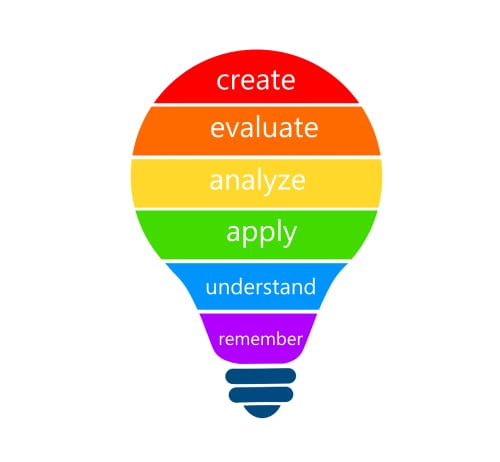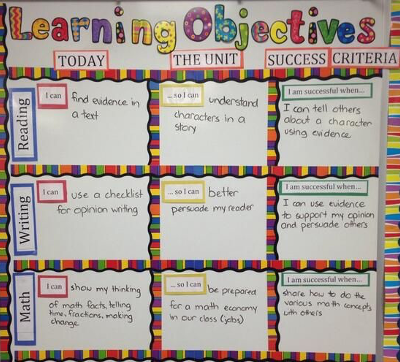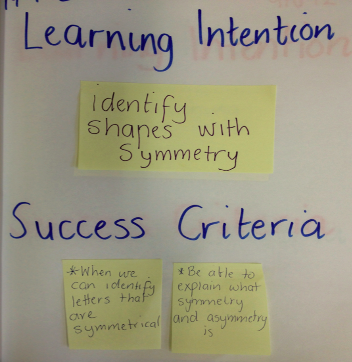Are they that important?
Throughout my teaching journey, my academic managers have always emphasized on having objectives “written” on the board every single day, but no one has ever told me why.
I never knew their importance till one day I decided to teach without objectives! That day had taught me an important lesson, and after a lot of reading and digging, I realized that setting goals, objectives and outcomes are the key factor to a successful learning experience.
WHAT’S THE DIFFERENCE BETWEEN GOALS, OBJECTIVES AND OUTCOMES?
The goal of any course is the broad or general scope about what you wish to accomplish with your learners on the long run, while an objective is the step(s) that you’ll take with your learners to achieve this goal, but the outcome is the evidence provided by your learners to prove that your goal has been achieved, in other words, the results of their assessment.
WHAT DOES THAT MEAN?
Let’s take a look at this example:
As an ESL teacher, my goal is to get my learners to become level B1 on the CEFR.(for further details about CEFR, click here)
- In order to achieve that I’ll set my objectives as follows:
By the end of this course, my students should be able to:
1- Read simple texts
2- Engage in oral conversation with appropriate pronunciation
3- write simple paragraphs
4- construct simple grammatical structures.
- The outcomes of such course could be:
Learners can:
1- Ask and answer questions about general topics, such as name, job, marital status
2- Read a short story and understand the main ideas in it
3-Write a paragraph introducing themselves and their family members
4-Use different forms of verb “be” and properly use the present simple tense in a full sentence.
HOW TO MAKE SURE THAT GOALS /OBJECTIVES ARE ACHIEVABLE?
You need to think SMART. Here’s how:
- Specific:
What’s the skill you want your students to develop this week?
- Measurable
What’s the tool/criteria you’ll use to measure their progress?
- Attainable:
Focus on achievable challenges within the given period of time, such as a short error-free essay instead of a long business e-mail.
- Realistic:
The activities chosen are relevant to the target objective. In other words, don’t prepare speaking activities for a writing lesson.
- Time-bound:
Specify the right time to measure the learners’ progress through the outcomes.
HOW TO SET OBJECTIVES BASED ON BLOOM’S TAXONOMY?
Bloom’s taxonomy is one of the best tools to take learners gradually from the lowest cognitive level, which is remembering, then understanding, applying, analyzing, evaluating up to the highest cognitive level: creating. (To know more about Bloom’s taxonomy in online education, click here)
Ideally, each of these levels should be covered in each course and, thus, at least one objective should be written for each level. Depending on the nature of the course and the mode of the lesson (in class/online), a few of these levels
may need to be given more emphasis than the others and certain verbs are used when writing objectives for each level. (for more Bloom’s taxonomy verbs, click here)
THE ABCD APPROACH
Clear objectives can be demonstrated following a basic formula: The ABCD approach. By using this formula, teachers will be able to create clear and effective objectives guided by bloom’s taxonomy. It consists of four key elements:
(A) Audience, (B) Behavior, (C) Condition, and (D) Degree.
Below are some color-coded sample objectives which include Audience, Behavior (using Bloom’s taxonomy verbs), Condition and Degree
For example:
- “Students will be able to compare between Present simple and present progressive tenses given in different situations.”
- “Given an article about special education, students will be able to debate whether children with special needs should be homeschooled or taught in schools.
- “Students will conclude the debate’s results to ensure that adequate services are provided to kids with special needs in three paragraphs.”
Now I Know My ABC’s
IS IT IMPORTANT TO SHARE OBJECTIVES WITH LEARNERS?
How many times have your learners asked you:
” Why are we doing this activity, teacher?”
It’s without a doubt, an extreme necessity to share lessons’ objectives with your learners and keep it visible throughout the lesson. Not only it’ll motivate them,but will also give them a clear vision of what’s needed to be done and why are they doing it.
You can even support your students by creating their own SMART plan, where they can set their own goals and track their progress too. This takes your learners from being “receptors of knowledge”to “source of knowledge”, which develops learners’ metacognitive skills and sets a democratic and safe environment in class as well.(You can find a sample action plan for your learners here)
HOW CAN WE KEEP THE OBJECTIVES VISIBLE THROUGHOUT THE LESSON?
There are various ways to keep the objectives visible without taking space from your board:
In this photo, the teacher used the space to create a table showing goals, objectives and outcomes (which is success criteria in the photo), where he/she can update them once achieved.
The colors and design are great for young learners to grab their attention and make it interesting to look at.
For older learners, it can be as simple as a sticky note that can be easily removed and changed. They can even write it themselves after a quick brainstorming about the lesson they’re about to learn..
For online classes, objectives can be displayed either on the virtual whiteboard, the chat pod, or share them in a document prior class so that learners have access to it at all times.
(for free objectives PPt templates, click here)
.
FINALLY
With all that being said, it’s of great importance to understand that objectives work as checkpoints that lead to a completion of a goal. It’s important to make them as clear and specific as possible to keep your learners from getting lost and always aware of what they’re doing.









Yes,the topic is useful and essential . Thanks for Sharing👍
LikeLike
You’re welcome dear
LikeLike
Thank you for sharing such useful articles
LikeLike
You’re welcome
LikeLike
Very informative!!
LikeLike
Thanks dear
LikeLike
Valuable article, usefull informations, and great explain.
Thank you.
LikeLike
Thanks a lot for your valuable feedback.
LikeLike